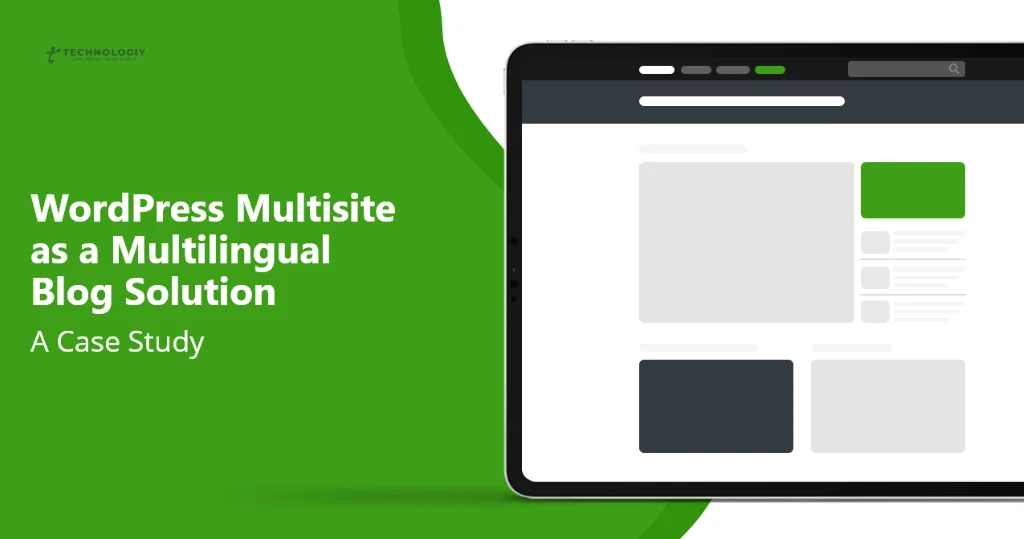Unlocking the Power of Multilingual Blog with WordPress: A Step-by-Step Guide: In this fast-paced globalized world, reaching out to a wider audience is essential for any successful blog. One way to do this is by creating a multilingual blog with WordPress. Not only does it enable you to connect with a diverse range of readers, but it also gives you a competitive edge in the digital landscape. In this step-by-step guide, we will show you how to unlock the power of multilingual blog with WordPress.
Step 1: Choose a Multilingual Plugin:
To begin your journey towards a multilingual blog with WordPress, you need to select a reliable multilingual plugin for your WordPress site. Numerous alternatives are accessible, with some well-liked selections such as WPML, Polylang, and Weglot. Research these plugins and choose the one that best suits your needs.
Step 2: Install and Activate the Plugin:
Once you have chosen your preferred multilingual plugin, the next step is to install and activate it on your WordPress site. This can be done by navigating to the Plugins section in your WordPress dashboard, selecting “Add New,” and uploading the plugin file. Once uploaded, click on the “Activate” button.
Step 3: Configure the Plugin Settings:
After activating the multilingual plugin, you will need to configure its settings. This involves selecting the languages you want to make available on your blog. Most plugins provide a user-friendly interface where you can easily add or remove languages. Remember to set a default language as well.
Step 4: Translate Your Content:
Now that your multilingual plugin is set up, it’s time to start translating your content. You have the option to engage professional translators or utilize machine translation services like Google Translate. While machine translation may not be perfect, it can be a good starting point. You can always edit and refine the translated content later.
Step 5: Create Language Switcher:
To enable your readers to switch between different language versions of your blog, you need to create a language switcher. This is usually done through a widget that can be added to your blog’s sidebar, header, or footer. The multilingual plugin you installed earlier should have options to customize and place the language switcher wherever you prefer.
Step 6: Optimize for SEO:
A multilingual blog is a great way to attract a global audience, but to ensure maximum visibility, you need to optimize your content for search engines. Make sure to use SEO keywords (or synonyms) in your translated content, including titles, meta descriptions, and headings. This will help search engines understand the language and relevance of your content.

Step 7: Regularly Update and Maintain:
Maintaining a multilingual blog requires consistent effort. Regularly update your translated content to ensure accuracy and relevance. Keep an eye on comments and feedback from readers in different languages and respond promptly. Also, stay updated with the latest versions of your multilingual plugin and WordPress itself to benefit from new features and security patches.
By following these steps, you will be well on your way to unlocking the power of a multilingual blog with WordPress. Remember, creating a successful multilingual blog takes time and dedication, but the rewards are well worth it. So, don’t hesitate to embrace the global audience and expand your reach. Happy blogging!
Disclaimer: This blog post is meant solely for informational purposes and should not be regarded as professional advice. Always seek guidance from a qualified expert for specific concerns.Top 10 Must-Have Multilingual WordPress Plugins for Your Blog:
Are you a blogger who wants to expand your reach to a global audience? Do you want to create a multilingual blog with WordPress? Look no further! In this blog post, we will introduce you to the top 10 must-have multilingual WordPress plugins that will make your blog accessible to people from all over the world.
WPML (WordPress Multilingual Plugin):
WPML is one of the most popular and powerful multilingual plugins for WordPress. It allows you to create a fully multilingual website with ease. With WPML, you can translate your blog posts, pages, custom post types, and even the theme texts. It also offers advanced features like language switchers, SEO optimization, and compatibility with popular WordPress themes and plugins.
Polylang:
Polylang is another great option for creating a multilingual blog with WordPress. It is easy to use and offers a user-friendly interface. With Polylang, you can translate your blog content into multiple languages and manage them effortlessly. It also supports RTL languages and offers a professional version with additional features like language switchers and multilingual SEO.
Weglot:
Weglot is a cloud-based multilingual plugin that simplifies the process of translating your WordPress blog. It automatically detects and translates your content into multiple languages, allowing you to reach a wider audience. Weglot also offers a language switcher that seamlessly integrates with your website.
TranslatePress:
TranslatePress is a user-friendly multilingual plugin that lets you translate your blog directly from the front end. It provides a visual translation interface, making it easy for you to see how your translations will appear on the live website. TranslatePress also offers SEO-friendly URLs, automatic translation, and compatibility with popular page builders.
MultilingualPress:
MultilingualPress is a powerful multilingual plugin that allows you to create a network of interconnected websites in different languages. It uses the WordPress multisite feature to manage your multilingual content effectively. MultilingualPress also offers synchronization of your content, SEO optimization, and a language switcher widget.
G-Translate:
qTranslate is a widely used multilingual plugin that offers easy and fast translation management. It allows you to create multilingual content with language-specific editing buttons. qTranslate also provides customizable language switchers, support for RTL languages, and compatibility with popular WordPress themes and plugins.
Loco Translate:
Loco Translate is a translation plugin that focuses on translating your WordPress themes and plugins. It offers an intuitive interface that allows you to translate your blog content directly from your WordPress dashboard. Loco Translate also provides an in-context editor for easy translation editing.
Transposh:
Transposh is a unique multilingual plugin that combines automatic machine translation with human editing. It offers a widget that allows your visitors to choose their preferred language. Transposh also provides an interface for manual translation editing, SEO optimization, and customization options.
Google Language Translator:
Google Language Translator is a simple and lightweight plugin that adds a language switcher to your WordPress blog. It uses Google Translate to automatically translate your content into different languages. Google Language Translator also offers customizable language switchers and compatibility with popular WordPress themes.
In conclusion, creating a multilingual blog with WordPress is now easier than ever, thanks to these must-have multilingual plugins. Whether you prefer automatic machine translation or manual translation editing, there is a plugin that suits your needs. By making your blog accessible in multiple languages, you can expand your reach and connect with a global audience. So go ahead, install these plugins, and start your multilingual blog with WordPress journey today!
Multilingual Blog with WordPress:
How Multilingual Blogging Can Boost Your Website TrafficIn today’s globalized world, where borders are becoming less significant and connectivity is increasing, reaching a wider audience is crucial for any online business. One effective way to expand your website’s reach and increase traffic is through multilingual blogging. By creating a multilingual blog with WordPress, you can tap into new markets and connect with a diverse range of readers, ultimately boosting your website traffic. In this blog post,
we will explore the benefits of multilingual blogging:
Reach a Global Audience:
When you limit your content to a single language, you are missing out on the opportunity to engage with millions of non-native English speakers around the world. By offering content in multiple languages, you can connect with individuals who prefer to consume information in their native tongue. This not only increases your website traffic but also enhances user experience and builds brand loyalty.
Improve SEO and Organic Traffic:
Multilingual blogging can work wonders for your website’s search engine optimization (SEO). By creating content in different languages, you can target specific keywords and optimize your website for different search engine algorithms. This means that when users search for information related to your niche in their preferred language, your multilingual blog posts are more likely to show up in the search results, leading to increased organic traffic.
Enhance User Experience:
When users visit your website and find content in their preferred language, they are more likely to stay longer, explore other pages, and engage with your brand. multilingual blog with WordPress allows you to provide a personalized experience to each visitor, making them feel valued and understood. By catering to their language needs, you can create a connection that goes beyond language barriers, resulting in increased website traffic and conversions.
Expand Your Market Reach:
By going multilingual, you open doors to new markets and opportunities. Each language represents a unique market with its own set of preferences and trends. By understanding the cultural nuances and tailoring your content accordingly, you can effectively target these markets and increase your website traffic from various regions. This not only helps in diversifying your audience but also minimizes the risk of depending solely on a single market.
Strengthen Your Brand Authority:
By offering valuable content in multiple languages, you position yourself as an authority in your niche on a global scale. This not only attracts more readers but also encourages them to share your content with others in their network. As your brand authority grows, so does your website traffic. With a multilingual blog with WordPress, you have the opportunity to become a trusted resource for readers worldwide, further increasing your visibility and attracting new visitors.
In conclusion, a multilingual blog with WordPress can be a game-changer for your website traffic. By reaching a global audience, improving SEO, enhancing user experience, expanding your market reach, and strengthening your brand authority, you can unlock new opportunities and take your online business to new heights. So, if you’re ready to boost your website traffic and connect with a wider audience, it’s time to embrace a multilingual blog with WordPress. Start today and watch your website thrive in the global marketplace.
